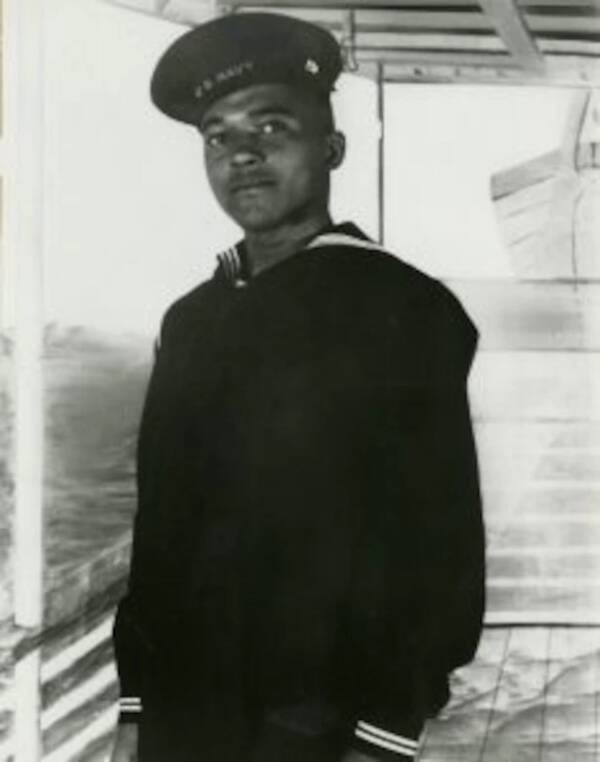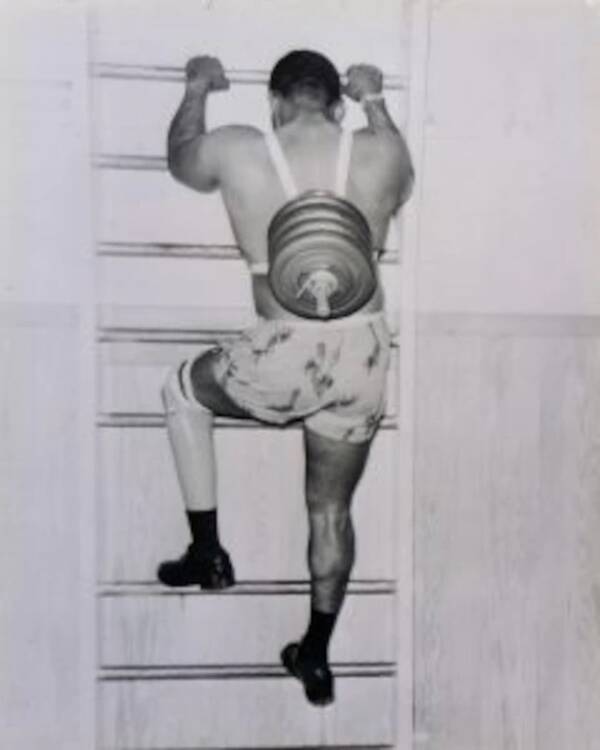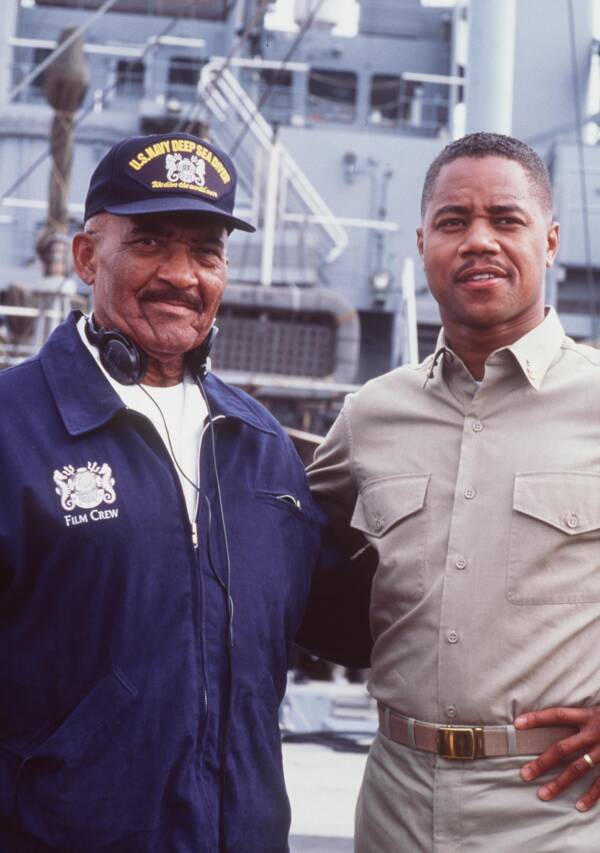The subject of the movie Men of Honor, Carl Brashear battled racism to become the U.S. Navy's first Black master diver — even after losing one of his legs.
Disaster struck on March 23, 1966. Two Air Force planes collided off the coast of Spain, dropping a hydrogen bomb into the ocean. As a Navy recovery team hauled the nuclear bomb up from the bottom of the sea, the towing line broke.
As a heavy steel pipe shot across the deck, diver Carl Brashear threw himself between the salvage team and the pipe in an incredible act of heroism. It struck his leg, shattering his bones. A doctor pronounced Brashear dead due to blood loss, only to change his mind soon after. Brashear survived, and went on to become the first amputee diver in the Navy, as well as its first Black master diver.

U.S. NavyNavy diver Carl Brashear broke boundaries as the first Black master diver and the first diver to be recertified after losing a limb.
“I would do it all over again, if I could,” Brashear said in a 2001 speech at DePauw University. This is the story of Carl Brashear, the barrier-breaking Navy hero featured in the 2000 film Men of Honor.
Who Was Carl Brashear?
Carl Brashear was born on January 19, 1931. The sixth of eight children, Brashear was the son of sharecroppers scraping together a living in rural Kentucky.
Brashear eventually dropped out of school in the seventh grade to work on the farm with his family. But he had bigger dreams.
In 1948, The New York Times reports, Brashear tried to sign up with the U.S. Army. When the Army rejected him, he tried the Navy, and was accepted. He officially enlisted in February 1948 – just four months before President Harry Truman desegregated the military.

U.S. NavyA photograph of a young Carl Brashear in his Navy uniform.
But joining the Navy was just the beginning for Brashear, who would go on to make history, overcoming hurdle after hurdle in the process.
Becoming A First-Class Diver
The Navy assigned Carl Brashear to the stewards’ branch, where he cooked for white officers.
Then, in 1950, Brashear watched from the deck of an aircraft carrier as divers recovered airplanes that had fallen into the ocean. At the time, the Navy had zero Black divers, but to Brashear, diving seemed every bit the adventure he’d been dreaming about.
But when Brashear wrote to the U.S. Navy Diving & Salvage School requesting a seat, his letters mysteriously vanished.
Brashear sent over 100 letters to the diving school before they finally accepted him, making him the school’s first Black attendee.
Throughout his diving training, Brashear was often harassed by some of his fellow trainees, who referred to him using racial slurs or left him threatening notes. “Sometimes my project would be sabotaged,” he recalled.

U.S. NavyMaster diver Carl Brashear in his diving gear.
In spite of his poor treatment, Brashear graduated in 1955. He was the first Black salvage diver in U.S. military history, according to Black Past.
“Some people may not like you,” Brashear later said in his DePauw speech. “But they can’t stop you.”
Brashear’s job was dangerous. As a diver, he was tasked with retrieving sunken ships and planes. Sometimes, he had to detonate World War II torpedoes. But Brashear thrived. And he continued his education, receiving his high school equivalency diploma in 1960.
Next, Brashear enrolled in the Navy’s deep-sea diving program. Initially, he struggled with the challenging physics and mathematics courses, but after years of studying, Brashear became a first-class diver in 1964 – and graduated third in his class.
The Hydrogen Bomb Disaster
Sunken World War II torpedoes could be deadly. But a lost hydrogen bomb was even worse.
In 1966, Carl Brashear had his most challenging assignment yet. That January, a B-52 bomber carrying four hydrogen bombs collided with a refueling tanker in Spain. Three bombs were quickly recovered in a nearby fishing village. But one fell into the Mediterranean.
Brashear’s rescue and salvage team was dispatched to recover the missing nuclear weapon.
Then, an accident nearly ended Carl Brashear’s life. As the first-class diver stood on the deck overseeing operations, a towing line snapped. In an instant, a heavy steel pipe flew across the deck toward the crew.
Brashear leapt into action, pushing the men out of the way — a heroic feat that would later earn him the Navy and Marine Corps Medal.
But the pipe struck Brashear’s left leg, nearly killing him. After he was transferred to the Portsmouth Naval Hospital in Virginia, doctors told Brashear that his leg would take years to heal, and that he’d still have to walk with a brace and a cane.
“Go ahead and amputate,” Brashear replied. “I can’t be tied up that long. I’ve got to go back to diving.”

U.S. NavyCarl Brashear shakes hands with an officer while wearing his diving gear.
Brashear remained in the hospital for almost a year as he recovered. Meanwhile, the Navy sent Carl Brashear discharge papers. He refused to sign.
The First Master Diver With A Prosthetic Leg
As the first Black man to graduate from the Navy’s diving school and the first Black first-class diver, Carl Brashear had already broken many barriers. After losing his leg during a salvage mission, Brashear vowed to return to his duties, a feat that would also make him the Navy’s first amputee diver.
Fitted with a prosthetic leg, Brashear returned to diving school. Many of the Navy officials there didn’t believe Brashear would succeed. But Brashear soon proved them wrong.
The Navy put Brashear through intense tests. He had to climb ladders carrying heavy barbells on his back, and carry 300 pounds of equipment without assistance – all while wearing a prosthetic leg. Carl Brashear passed every test.

U.S. NavyWearing his prosthetic leg, Carl Brashear scaled a ladder with weights on his back.
It wasn’t easy. “Sometimes I would come back from a run, and my artificial leg would have a puddle of blood from my stump,” Brashear admitted, per the Los Angeles Times. “If I had gone to sick bay, they would have written me up. I didn’t go to sick bay. I’d go somewhere and hide and soak my leg in a bucket of hot water with salt in it.”
In 1970, Brashear earned the master diver credential – the highest level for Navy divers.
Brashear served in the Navy until 1979, and then worked in a civilian role at Naval Station Norfolk until he retired in 1993.
Men of Honor Celebrates Carl Brashear
In 2000, the movie Men of Honor told the real-life story of Carl Brashear, played by Cuba Gooding Jr. The retired diver acted as a consultant for the film, and later confirmed that it was a largely accurate depiction of his life.

Getty ImagesCarl Brashear with Cuba Gooding, Jr. during the filming of “Men of Honor,” based on Brashear’s life.
“Not in my wildest dreams did I think this would happen,” Brashear said in a 2001 CNN interview. “Even after I lost my leg I was just doing my job.”
Carl Brashear died of heart and respiratory failure at the Naval Medical Center on July 25, 2006 at the age of 75.
Just a few years before his death, Brashear reflected on his career, saying:
“I was able to turn tragedy into triumph, even with the dirt I had on me the dirt of racism, the dirt of prejudice, the dirt of discrimination, the dirt of doubt, the dirt of disbelief. I had it all on me but I had the ability to shake it off and raked it under my shoe until I was able to step over adversity.”
After overcoming enormous odds, Carl Brashear became a celebrated hero. Next, read about Henry Johnson, a Black World War I hero forgotten for years, and then learn about other Black heroes in the military.





